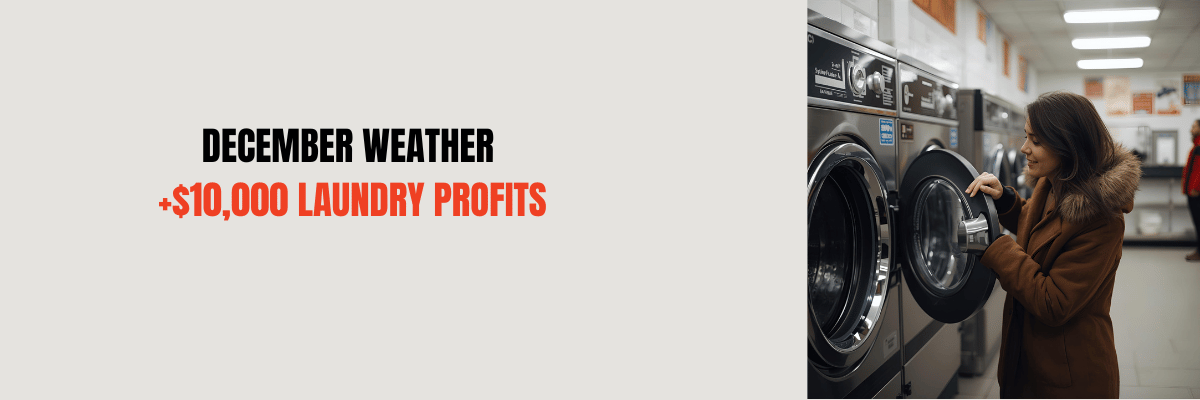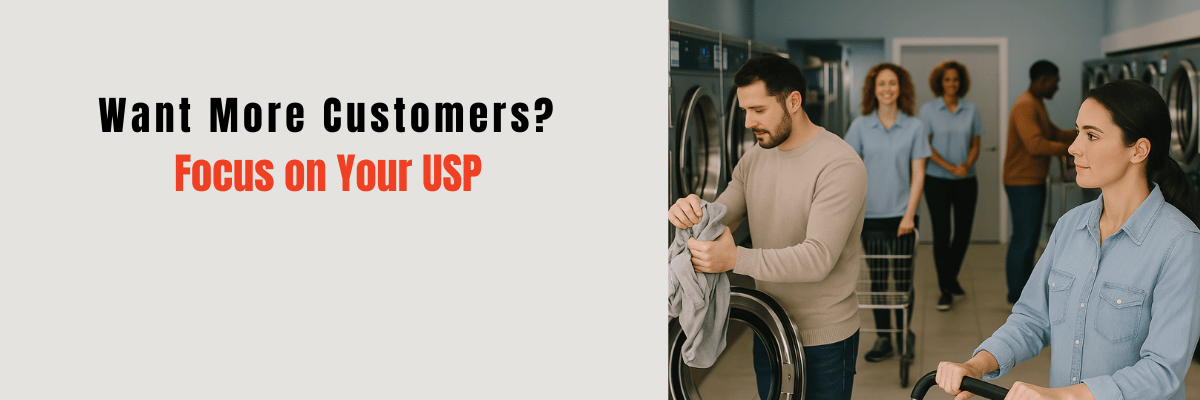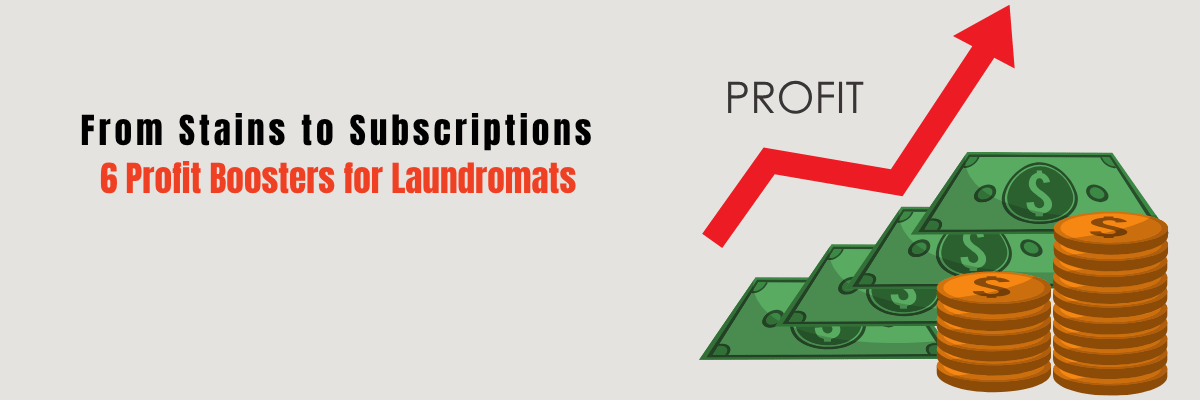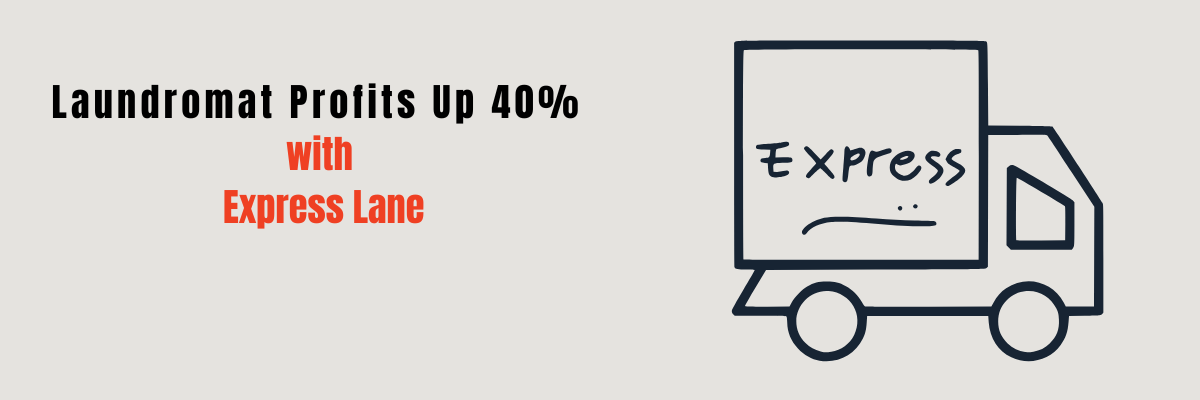How Much Does it Cost to Open a Laundromat? : Updated version for Laundromat Owner


Have you ever contemplated the overhead costs of a laundromat? Pondered over the funds needed for equipment upkeep or staff salaries? Let's navigate the world of coin-laundry, unveiling hidden costs and sharing useful tips to stay on top of the monetary game.
A laundromat can be a good passive investment due to its consistent demand and potential for automation. However, it's essential to carefully assess the costs of opening laundromat and continuously monitor your daily income to ensure it remains a profitable venture. With the right planning and management, a laundromat can offer a stable and relatively hands-off source of income.
On a typical scale, launching a laundromat will set you back anywhere from $200,000 to $500,000. Your financial footprint hinges on whether you're breathing new life into an existing establishment or embarking on a ground-up venture, coupled with the prevailing real estate climate in your locale.
Understanding costs is pivotal for aspiring or current laundromat owners as it directly affects their business's profitability and sustainability. A clear view of the expenses helps prevent financial hurdles that could stymie growth or lead to business failure. Here are the key reasons why understanding costs is vital:
Calculating the Investment: How Much to Open a Laundromat
Financial Planning: Comprehending costs lets owners formulate a comprehensive business plan with precise revenue forecasts and expense control. This results in improved financial planning, ensuring business viability.
Pricing Strategies: Cost knowledge helps owners to set appropriate service prices. By including all expenses, owners can set competitive yet profitable rates to attract customers and generate reasonable profit margins.
Budgeting and Cost Control: Grasping costs allows owners to establish realistic budgets and track expenses efficiently. Owners can identify potential areas for cost optimization, negotiate better contracts, or initiate cost-reducing measures to enhance profitability.
Investment Decisions: When contemplating equipment upgrades or other business investments, cost understanding is crucial. Owners can accurately evaluate return on investment (ROI) and make informed decisions about capital expenditures, aligning investments with the business's financial goals.
Cash Flow Management: Awareness of costs aids owners in forecasting and managing cash flow effectively. By accounting for fixed and variable costs, along with anticipated revenue, owners can ensure sufficient funds to cover expenses and manage potential income fluctuations.
Business Growth and Expansion: Comprehending costs provides a solid foundation for scaling the laundromat business. With accurate cost assessments, owners can confidently explore new opportunities while assessing their financial feasibility.
When launching a new business and opening a laundromat Know how much does it cost to start a laundromat.
Starting a Laundromat with Little to No Initial Capital
Starting a laundromat business with no money down can be challenging, but it's not impossible. Here are some creative strategies and steps to help you get started without a significant upfront investment:
Partnership or Joint Venture:
Look for potential partners who are willing to invest the initial capital in exchange for a share of the business. This could be a family member, friend, or a business-minded individual who sees the potential in the venture.
Find a Sponsor or Investor:
Seek out investors or sponsors who are interested in supporting your laundromat business in exchange for a share of the profits. You can pitch your business idea to local investors or explore crowdfunding platforms.
Lease or Rent a Space:
Instead of purchasing or building a laundromat from scratch, consider leasing or renting a suitable space. This can significantly reduce your initial costs.
Equipment Leasing or Financing:
Explore equipment leasing or financing options to acquire washers, dryers, and other necessary equipment. Many equipment suppliers offer leasing arrangements that can help you spread out the costs over time.
Negotiate with Equipment Suppliers:
Approach equipment suppliers and negotiate favorable terms, such as deferred payments or extended payment schedules. Some suppliers may be open to financing arrangements.
Buy Used Equipment:
Consider purchasing used laundry machines at a lower cost than new ones. Be sure to thoroughly inspect and test used equipment before buying to ensure it's in good working condition.
Bootstrapping:
Bootstrap your way into the business by using personal savings and resources. This might involve starting on a smaller scale and gradually reinvesting profits to expand.
Business Grants and Competitions:
Research government grants, small business competitions, or startup incubator programs that may provide funding for your laundromat business idea.
Vendor Financing:
Work with suppliers and vendors who offer financing options for their products and services. Some may be willing to provide equipment or supplies with delayed payments.
Online Fundraising and Crowdfunding:
Explore crowdfunding platforms like Kickstarter or GoFundMe to raise capital for your laundromat. Explain your business idea and offer rewards or incentives to backers.
Barter or Trade Services:
Consider bartering or trading your skills or services for equipment, supplies, or assistance. This can help reduce your initial expenses.
Create a Detailed Business Plan:
Develop a comprehensive business plan that outlines your business goals, financial projections, and strategies for attracting customers. A well-thought-out plan can make you more attractive to potential partners or investors.
Sweat Equity:
Invest your time and effort into the business, providing labor and management skills in lieu of a financial contribution. This can be especially appealing to potential partners.
Build Credit and Seek Loans:
Over time, work on building your personal or business credit. Once you have established creditworthiness, you may be able to secure small business loans to fund your laundromat.
Remember that starting a laundromat with no money down may require a combination of these strategies, and it may take time to piece together the necessary resources. Additionally, be prepared to put in a significant amount of effort, especially if you're relying on partnerships, negotiations, or creative financing options to launch your business successfully.
The Laundromat Industry: A Profitability Outlook
Ever thought about the profitability potential of the laundromat industry? It's a stable sector within the larger laundry services market, showing steady demand due to rising numbers of renters, busy lifestyles, and the quest for convenient laundry solutions. The customer base is diverse, including individuals, families, students, and businesses requiring commercial laundry services.
The self-service model of laundromats allows for low labor costs, and income is generated through machine usage fees. With smart cost management and an adequate number of machines to meet customer demand, laundromats can achieve sound profit margins. They also benefit from a recurring revenue model, as customers regularly need laundry services, ensuring a steady income stream.
It's crucial to manage costs effectively, considering elements such as rent, utility bills, equipment maintenance and repair, insurance, supplies, marketing, and potentially, staff salaries. Understanding and controlling these costs is vital for maximizing profitability.
Recent industry trends include energy-efficient machines, value-added services like drop-off laundry, and mobile payment options. While competition exists, differentiation opportunities are available by offering a clean, safe environment, exceptional customer service, high-quality equipment, and innovative technologies.
Businesses can scale by opening new locations or diversifying services. However, profitability may vary based on location, market demographics, competition, operational efficiency, and effective marketing strategies. Detailed market research, accurate financial planning, and continuous expense and revenue monitoring are crucial for maximizing profitability.
Fixed Costs in a Laundromat Business
Fixed costs refer to expenses that remain constant, irrespective of business activity level or customer numbers. These costs include rent or lease expenses, utilities (water and electricity), insurance premiums, regular equipment maintenance and repairs, property taxes, and licenses and permits. Understanding these costs is crucial for financial planning and budgeting.
Estimating and Budgeting Fixed Costs
To estimate and budget fixed costs, start by researching specific expenses for running a laundromat in your area. Analyze historical data if available and obtain quotes for specific expenses. Consider inflation and market trends when estimating costs and create a detailed budget for each fixed cost item. Regularly monitor and review your costs against the budget and adjust as necessary. Always include a contingency fund for unexpected costs.
Remember, budgeting for fixed costs is an ongoing process that should adapt as your laundromat evolves and market conditions change. Regular financial analysis helps keep you on track and enables informed decision-making for effective cost management.
Variable Costs in Laundromat Operations
Variable costs, in laundromat parlance, denote expenses that shift in relation to the volume of laundry processed. They vary according to factors such as customer numbers, machine usage, and laundry volume. Below are some common variable costs in a laundromat setting:
When starting a laundromat business, it is important to consider the variable costs associated with the venture.
Water and Electricity: Utility costs like water and electricity are crucial variable expenses. As customers utilize washing machines and dryers, water is needed for washing and rinsing, while electricity powers the machinery. The larger the customer base and the laundry volume, the higher these costs.
Laundry Supplies: Costs for detergent and other laundry essentials are considered variable. As the laundry volume increases, so does the consumption of these supplies.
Employee Wages: If your laundromat employs personnel for added services like drop-off laundry or cleaning tasks, their wages would be a variable cost, correlating directly with the business activity and customer demand level.
Maintenance and Repairs: Although routine maintenance is generally a fixed cost, unplanned repairs or machine breakdowns could be variable costs, fluctuating based on the maintenance and repair frequency and severity needed to keep the machines operational.
Ancillary Service Costs: If your laundromat offers auxiliary services like dry cleaning or vending machines, the costs associated with these services would be variable. For example, dry cleaning costs would hinge on the garments processed, while vending machine expenses could vary based on product consumption.
Managing variable costs is critical for effective financial planning and decision-making in a laundromat business. Here are some key considerations:
Tracking and Monitoring: Keep meticulous records of variable costs such as utility usage, detergent and supply expenses, and employee hours worked. Regularly review and analyze these costs to discern patterns and trends.
Pricing Strategy: Incorporate variable costs into pricing decisions. Setting apt rates for machine usage and additional services can ensure that revenue covers the incurred variable costs.
Efficiency Measures: Adopt measures like energy-efficient machines, optimal water usage, and staff productivity training to curtail variable costs and boost profitability.
Volume and Demand Analysis: Scrutinize customer volume and demand patterns to better predict variable costs. This analysis can facilitate efficient resource allocation, variable expense management, and planning for peak periods.
Cost Reduction and Financing Strategies For Laundromat
Efficient cost management and securing adequate financing are crucial for the initial success and sustainability of a laundromat business. Here are some strategies that can help reduce startup costs and secure financing:

Cost Reduction:
Equipment Selection: Carefully choosing the right equipment can significantly cut down costs. Opt for energy-efficient machines to reduce utility costs in the long run, and consider quality used equipment if it's in good condition.
Space Optimization: Strategically layout the space to accommodate more machines and services, which can increase revenue without additional rental costs.
Lease Negotiation: Aim for favorable lease terms, such as lower rent or a longer lease term to secure the location at a reasonable cost.
Do-It-Yourself Renovations: Handle minor renovations and repairs yourself if possible, rather than hiring professionals.
Economical Marketing Strategies: Utilize cost-effective marketing strategies such as social media advertising, community outreach, and cross-promotions with local businesses.
Financing Options for Laundromat Business:
Business Loans: Traditional bank loans can be an option for financing. Be prepared with a comprehensive business plan and financial projections when approaching lenders.
Government Programs: Explore small business grants or loans available through local or national government programs.
Investor Partnerships: Consider seeking an investor who can provide funding in exchange for a share of the business profits.
Crowdfunding: Online crowdfunding platforms can be a source of funding, especially for businesses that offer community value or have a unique selling proposition.
Equipment Leasing: Leasing equipment, rather than buying, can reduce the upfront cost and often includes maintenance and repair services.
Comparing various financing options, understanding the financial needs, and communicating effectively with potential financiers are critical steps in securing funding for a laundromat business.
Revenue Generation and Profitability of Laundromat
Revenue generation and profitability are critical for the success of a laundromat business. Below are some strategies to consider:
Competitive Pricing: Pricing machine usage competitively, while ensuring profitability, is a primary revenue driver.
Additional Services: Offering services like wash-and-fold, dry cleaning, or ironing can bring in additional revenue.
Vending Machines: Installing vending machines for laundry supplies, snacks, or drinks can generate supplementary income.
Loyalty Programs: Implementing customer loyalty programs can encourage repeat business, thereby boosting revenue.
Marketing and Promotions: Effective Laundromat marketing strategies and promotional offers can attract more customers and increase sales.
Operational Efficiency: Using energy-efficient equipment, managing supply use, and routine maintenance can reduce costs and improve profitability.
Cost Management Strategies For Laundromat
Effective cost management strategies can increase the profitability of a laundromat business. These include:
Efficient Equipment Use: Encourage customers to fully load machines and use appropriate settings to save on water and energy costs.
Regular Maintenance: Regular equipment maintenance can prevent costly repairs and machine downtime.
Utility Costs: Monitor and manage utility costs, including electricity, water, and gas. Use energy-efficient equipment and practices where possible.
Inventory Management: Manage laundry supplies inventory efficiently to prevent overstocking or running out of supplies.
Employee Efficiency: If you have employees, ensure they are trained to work efficiently and provide excellent customer service.
Remember that constant monitoring of costs, revenue, and financial performance, coupled with adjustments as needed, is essential for ongoing profitability and success.
Securing Financing:
Personal Savings: Use personal savings as a source of capital. This is the most accessible form of financing and does not require any interest payments or giving up ownership in the business.
Business Loans: Apply for business loans through commercial banks or credit unions. These typically require a detailed business plan and solid credit history. SBA loans, backed by the Small Business Administration, are also an option to consider as they offer favorable terms to small businesses.
Equipment Financing: Leasing equipment or applying for equipment financing can reduce the initial investment required. These financing options often come with maintenance and repair services which can lower ongoing operational costs.
Crowdfunding: Utilize online crowdfunding platforms to raise small amounts of money from a large number of people. This can be a viable option if the business idea resonates with the public and has a unique value proposition.
Angel Investors and Venture Capitalists: Pitch the business idea to angel investors or venture capitalists. This could be a way to secure a larger amount of funding, but usually involves giving up some ownership or control in the business.
Grants and Government Programs: Explore grants and low-interest loan programs offered by local or national government agencies. These are often designed to encourage small businesses and may have specific requirements to qualify.
Operational Costs of Laundromat
Operating a laundromat business involves various ongoing costs, which are critical to account for when developing your business plan and calculating profitability. Here are the main areas of operational costs:
Utilities: This is one of the largest operational costs for a laundromat. It includes electricity for running the machines and lighting, water and sewer for the washers, and gas for the dryers and water heaters. The exact cost will depend on local utility rates and the efficiency of the machines.
Equipment Maintenance and Repairs: Regular maintenance is crucial to prolong the life of the machines and prevent costly repairs or replacements. Depending on the agreement with the equipment supplier, this may involve a regular service fee.
Lease or Mortgage Payments: Regular payments for the business location, whether leased or owned, are a major operational cost. The exact amount will depend on the property size, location, and agreement terms.
Renting or buying a location will likely be one of the biggest costs. The price will depend on the size of the location, its condition, and its geographic area. Monthly rent can range from $1,000 to $5,000 or more. If you're buying the property, the costs can be much higher upfront.
Insurance: Insurance premiums for coverage such as liability insurance, property insurance, and workers' compensation (if employees are hired) are necessary expenses for protecting the business from potential risks. Costs can range widely based on the size of your laundromat and the level of coverage you want. However, a ballpark figure might be $2,000 to $6,000 per year.
Supplies: Regularly needed supplies include laundry detergent, fabric softener, and dryer sheets if offered to customers, as well as cleaning supplies for maintaining the facility.
Employee Wages: If the laundromat is staffed, wages for employees will be a significant part of operational costs. Even if the laundromat is self-service, someone will need to clean the premises, refill vending machines, maintain equipment, and provide customer service.
Marketing and Advertising: To attract and retain customers, ongoing marketing and advertising efforts will be necessary. This can include online advertising, print ads, promotions, and maintaining a website or social media presence. Setting aside a budget for grand opening promotions, signage, and ongoing advertising is crucial. This might range from $1,000 to $10,000 initially, depending on your approach.
Licenses and Permits: Annual renewal of business licenses and permits, and any related inspection fees, need to be factored into operational costs. The costs here vary by state and municipality. You could spend anywhere from a few hundred to a few thousand dollars.
It's important to carefully track these operational costs, along with income, to manage cash flow effectively and ensure the laundromat remains profitable. Strategies to reduce these costs, such as investing in energy-efficient machines or implementing effective maintenance schedules, should also be considered.
Risks and Challenges of Laundromat Business
While a laundromat business can be profitable, like any business, it comes with its own set of risks and challenges. Here are some of the main ones to consider:
Competition: Depending on your location, there may be significant competition from other laundromats, as well as from home washing machines. Understanding your market and differentiating your business are crucial to staying competitive.
Equipment Maintenance and Breakdowns: Machines may break down or require regular maintenance, which can result in costly repairs or replacement. This can also disrupt business operations and potentially affect customer satisfaction.
High Upfront Costs: Purchasing commercial-grade washers and dryers, renovating a space to fit your needs, and installing necessary plumbing and electrical systems can be costly.
Energy Costs: Laundromats consume a significant amount of energy and water. Any increases in utility rates can significantly impact your profit margins.
Changing Technology: As technology advances, newer, more efficient, and customer-friendly machines become available. Keeping up with these changes may require additional investment in equipment.
Economic Conditions: Economic downturns can affect the disposable income of potential customers. However, people typically still need to wash their clothes, so this is often seen as a recession-resistant industry.
Regulatory Changes: Any changes in regulations related to environmental issues, water usage, or waste management could impact operations and involve additional costs.
Security and Vandalism: Laundromats can be targets for theft or vandalism, particularly if they are open 24/7 and unstaffed during some hours. It's important to consider security measures such as surveillance cameras or alarm systems.
Dependence on Location: The success of a laundromat often hinges on its location. Changes in the neighborhood, such as a decline in population or the closure of nearby businesses, can impact foot traffic and customer base.
Customer Service: Maintaining a high level of customer service can be challenging, especially if the laundromat is unstaffed. Satisfied customers are likely to return and recommend your business to others, so it's crucial to ensure a positive customer experience.
Risk management and contingency planning are essential for addressing these challenges. This might include securing comprehensive insurance coverage, maintaining an equipment repair fund, and regularly reviewing and updating your business and marketing strategies to stay competitive. Regularly analyzing market trends, customer preferences, and financial performance also helps in making informed decisions and adapting your business model to changing circumstances.
Marketing and Advertising Strategies and Costs for Laundromat Business
Effective marketing and advertising are crucial to attracting and retaining customers for your laundromat business. Here are some strategies to consider:
Online Presence: Create a professional website to highlight your services, prices, location, and hours of operation. Optimize the site for search engines (SEO) to increase your visibility in online search results. Costs for website development can range from a few hundred dollars for a basic template to several thousand dollars for a custom-designed website.
Social Media Engagement: Establish a presence on social media platforms. Share updates about your business, special promotions, or helpful laundry tips. Engage with your customers and respond to their comments or messages promptly. Costs for social media marketing can vary widely based on the platforms used and the level of engagement desired.
Local SEO and Google My Business: Register your laundromat with Google My Business to increase your visibility in local search results and Google Maps. Regularly update your profile with current information, and encourage customers to leave reviews. Costs for SEO services can range from a few hundred to a few thousand dollars per month, depending on the level of competition in your area.
Community Involvement: Get involved in local events or sponsor community initiatives to build your brand reputation and awareness. Participating in community service can help foster good relationships with local residents.
Loyalty Programs: Implement a loyalty program to encourage repeat business. Offer customers rewards or discounts for regular visits or referrals.
Collaborations: Partner with local businesses or service providers that can complement your services. For example, collaborate with a local coffee shop to offer discounts to customers who show a receipt from your laundromat, and vice versa.
Flyers and Brochures: Costs for designing and printing flyers or brochures can vary based on quantity, quality, and complexity. Prices can range from a few hundred to a few thousand dollars.
Direct Mail: Use direct mail to distribute flyers or coupons to residents in the surrounding area. This can be an effective way to attract new customers, especially if you are just opening or have introduced new services. Costs for direct mail campaigns will depend on the quantity of mailers, design, printing, and postage. It can range from a few hundred to several thousand dollars per campaign.
Signage and Window Displays: Ensure your signage is clear and visible from a distance. Utilize window displays to promote special offers or services.
Local Ads and PR: Consider advertising in local newspapers or radio stations. You could also write press releases to share news about your laundromat, such as the introduction of new equipment or services. Costs for newspaper or magazine advertisements will vary based on the publication, size of the ad, and circulation. Prices can range from a few hundred to several thousand dollars per ad.
Email Marketing: Collect customer email addresses (with their consent) and send out regular newsletters with updates, promotions, and laundry tips.
A successful marketing strategy involves a mix of different tactics and channels, and what works best will depend on your local market and customer base. Continually evaluate the effectiveness of your marketing efforts and adjust your strategies as needed. By effectively promoting your laundromat, you can attract more customers, increase revenue, and grow your business.
It's important to note that these costs are estimates and can vary significantly depending on your location, business needs, and the specific marketing strategies you choose to implement. It's recommended to create a marketing budget based on your business goals and consult with professionals or agencies to get accurate cost estimates for your specific situation.
Considering all these factors, a small laundromat might cost between $100,000 to $300,000 to set up, while larger or more upscale laundromats might cost upwards of $500,000 to $1 million or more. It's crucial to conduct a thorough market analysis and business plan to understand your specific costs better.
FAQs About “How Much Does it Cost to Open a Laundromat”
Question- What are the main cost factors when opening a laundromat?
Answer- The costs can vary based on factors like location, size, equipment, renovations, permits, and additional services. Key expenses include leasing or purchasing a space, purchasing machines, utilities, marketing, and initial supplies.
Question- How much does leasing or purchasing a space for a laundromat cost?
Answer- Leasing costs depend on the location and size of the space. Purchasing costs depend on property values in the area. In prime locations, leasing costs might be higher due to visibility and foot traffic.
Question- What's the cost of commercial laundry machines?
Answer- Commercial washing machines and dryers vary in cost. Basic machines can start at a few thousand dollars each, while more advanced models can cost several thousand dollars each. The total cost depends on the number and type of machines you need.
Question- Are there other equipment costs to consider?
Answer- Yes, you'll need laundry carts, folding tables, seating, payment systems, soap dispensers, and potentially vending machines. These costs can add up and vary based on the size of your laundromat.
Question- What's the cost of renovations and build-out for the space?
Answer- Renovation costs can vary significantly based on the condition of the space and the extent of renovations needed. Costs might include plumbing, electrical work, flooring, painting, and interior design. Depending on the state of the property, you might need to renovate and adapt it for a laundromat, which can cost anywhere from $10,000 to $200,000 or more.
Question- Are there legal and permit costs to consider?
Answer- Yes, obtaining permits and licenses to operate a commercial business can involve fees. Costs vary by location and the specific requirements of your area.
Question- How much should I budget for initial supplies and inventory?
Answer- Budget for laundry detergents, fabric softeners, cleaning supplies, laundry bags, vending machine inventory (if applicable), and any other consumables you plan to offer.
Question- Are there ongoing operational costs to consider?
Answer- Yes, operational costs include rent or mortgage payments, utilities (water, electricity, gas), maintenance and repairs, employee wages (if applicable), marketing and advertising expenses, and the cost of supplies.
Question- Should I budget for marketing and advertising expenses?
Answer- Yes, allocating a budget for marketing is important to attract customers. Consider costs for creating a website, social media advertising, local promotions, signage, and any other marketing efforts.
Question- What about insurance costs?
Answer- Insurance is crucial for protecting your business. Costs vary based on factors like location, size, and coverage types (liability, property, workers' compensation, etc.).
Question- Are there financing options available for opening a laundromat?
Answer- Yes, financing options include bank loans, Small Business Administration (SBA) loans, private investors, and personal savings. Research your options and create a detailed business plan to secure financing.
Question- How much working capital should I have to cover initial expenses?
Answer- Having a cushion of working capital is important to cover unexpected expenses and operating costs until your laundromat becomes profitable. A few months' worth of operating expenses is a common recommendation.
Opening a laundromat is an investment that requires careful financial planning. Research and estimate costs accurately to create a comprehensive business plan and secure the necessary funding to successfully launch and operate your business.






